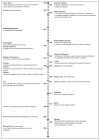Epidural analgesia for labor: Current techniques
- PMID: 23144567
- PMCID: PMC3417963
- DOI: 10.2147/LRA.S10237
Epidural analgesia for labor: Current techniques
Abstract
Epidural analgesia is an extremely effective and popular treatment for labor pain. In this review, we trace the history of the use of epidural analgesia and its refinements. We then outline the goals of treatment and methods used to attain those goals. The use of low concentrations of local anesthetics, combined with lipid-soluble opioids, does not impede the progress of labor or depress the newborn. The incidence of side effects is low. Maintenance of analgesia that allows patient control enhances patient satisfaction.
Keywords: analgesia; childbirth; epidural; labor; local anesthesia; spinal.
Figures


References
-
- Canadian Institute of Health Information. Highlights of 2008–2009: Selected indicators describing the birthing process in Canada. [Accessed 2010 Sep 3]. Available from: http://www.cihi.ca.
-
- Bucklin BA, Hawkins JL, Anderson JR, Ullrich FA. Obstetric anesthesia workforce survey: Twenty-year update. Anesthesiology. 2005;103:645–653. - PubMed
-
- Doughty A. Walter Stoeckel (1871–1961): A pioneer of regional analgesia in obstetrics. Anaesthesia. 1990;45:468–471. - PubMed
-
- Curelaru I, Sandu L. Eugen Bogdan Aburel (1899–1975). The pioneer of regional analgesia for pain relief in childbirth. Anaesthesia. 1982;37:663–669. - PubMed
-
- Evans KR, Carrie LE. Continuous epidural infusion of bupivacaine in labour: A simple method. Anaesthesia. 1979;34:310–315. - PubMed
LinkOut - more resources
Full Text Sources
Medical

